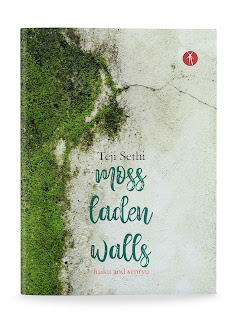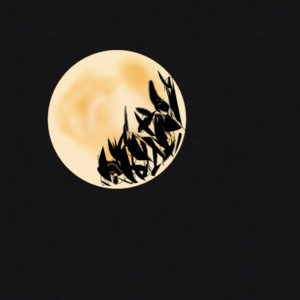Dwelling
with Denial: A Collection of Poems by Rajiv Khandelwal
ISBN:
978-93-89213-19-5, The Poetry Society Of India, 2020 p. 130
Reviewed by Pravat Kumar Padhy, Poetcrit, July 2021
Rajiv has a unique way of
writing poetry manifesting the contemporary structural fabric. He is
spontaneous to express the inner feeling and his poetry often forms a dialogue-style
with words of frankness. In the present collection, ‘Dwelling with Denial’, he
has portrayed broadly the topics related to social issues with political
satires at places. Some of his poems included in the collection broadly sketch
the poet’s urge for love and carry the glimpses of sensual streaks. He is often
optimistic in his approach and occasionally dwells in the cradle of pessimism.
Perhaps he wishes to put the point of view straight and forthwith as has been
observed with uneven line breaks and without any punctuation.
Similarly, the
persistence of socio-political and socio-economical evils frustrates him and compels
him to dwell in spite of strong resistance. This might have led the poet to
appropriately title the collection of verses.
Towards the end, he engages himself composition of analytical poetic
exhibitions about the poet, poetry, and its content.
Interestingly,
Rajiv has tried to use poetic devices in an artful style. The use of
word-phrases, sound repetition, similes, metaphor, and allegorical expressions
has added beauty to the collection.
He
has used beautiful and stimulating words as ‘like evaporation of faith,’ ‘blind
person’s yearning for eyesight,’
‘As silent as our shadows,’ ‘Baggage of
thoughts,’ ‘arsenic eyes,’ ‘Ice-hard resolutions,’ ‘As dry as the desert
sands,’ ‘clothes of understanding,’ ‘quicksand of crazy,’ ‘corrosive thoughts,’
‘wide-eyed realization,’ ‘thick fog of lust,’ ‘thirsty tree leaves,’ ‘keening
cry,’ ‘Tongue-tied.’ Indeed these are worthy examples to contemporary
literature.
Poetic
craftsmanship and the use of figures of speech have been often observed in his poetry
with nuanced techniques. The use of similes such as “Our eyes locked/ Like
insects in amber” (‘Another Wait’);
“Like the whisper of a sleeping child”
(‘Call You Later’); “That I
missed her/ Like fish missing water……Like parched earth missing/ Raindrops/ In
rain forests” (‘In Rain Forests’). At places, Rajiv uses
musicality
with the use of alliteration like ‘stern signature stare,’ ‘prying pedestrian
peek,’ ‘unwisely unafraid, clock’s click clack’ etc.
Occasionally
he has crafted a few metaphorical articulations such as:
In
my life
She
is the cloud
Without
which there can be no rain (‘My
Wife’)
And my thoughts
Roam aimlessly like a typical
window-shopper (‘Wandering
Thoughts’)
Rajiv is forthcoming in
his expression with poetic diction as observed in the poem, ‘Petition’. The
textual fabric of expression in the poem demonstrates a distinct literary
accomplishment as he appeals with optimism in spite of all odds:
Requesting a stay order
On the cancer gnawing away my
vitals
Today, the red flag from the
doctors
Revealed
My petition has been rejected
The gods have not commuted the
death sentence
……………………..
……………………..
Bring faith and joy
As I wait
Hot, wet and not weary
To give you pleasures
Beyond measures
Come before the
glass hour sands drop down
Terrorism and heinous
disturbances have been sketched in some of the poems. He is very much disturbed
by the plight of ‘Pulwama’ attack and condemns the dreadful act by the
terrorists:
I have
Against the vulture
That sweeps down my garden
Every afternoon
Since “Pulwama” attack
While it ought to be dive bombing
With its flock
To feast
Across the LOC (‘To The Pilots Who Visited Balakot’)
The
poet engages himself in the corridor of love as observed in the poem, ‘Another
Wait’, ‘Union’, ‘Dear Mate’, ‘A Dilemma’, ‘Call You Later’, ‘When She Is Around’, ‘The Suckables’, ‘Her Hands’, ‘A Backward Glance’, ‘My Darling’, ‘The Rain
Forests’. The love poems are expressions of more visual manifestation
and prosaic narration. Sometimes the images are infused with poetic
elusiveness. The poet paints the touch
of sensual feeling through crafted style:
The
fourth ring
Satisfying
to the mind as water to thirsty lips
Came
like the bride carrying thoughts of budding love (‘Call You Later’)
The
sound of her voice
Her
facial features
Her
youthfulness
Her
curves
All a magic ticket
A spy-hole into dreams (‘When She Is Around’)
Thoughts
That
fed of each other
Let loose
Were
up all night
Painting
the town red (‘Her Hands’)
The
poet is very sensitive to the prevailing social issues. He described the heinous
plight of human trafficking, the painful life of the victim, and her expression
out of anguish in the poem, ‘Pain Desiring Understanding’.
Let your mother, sister, daughter
Or say your wife
Let them just merely imagine
Living my life, a single day
Like a piece of meat
Only then, dare to
Point moral compass towards
us
He has carefully touched the
poverty, socio-economic, socio-political, and religious aspects in the poems
like ‘The Debt’, ‘Dwelling with Denial’, ‘Guilty’, ‘Echo’, ‘The Kick’ and ‘Life
As Usual on This Road’.
In the poem, ‘The Kick’, the poet allegorically
portrays the contemporary images corroborating the social issue. It is a masterpiece
of socio-sensibility.
The
pothole
Took
the kicks
Silently
and with surrender
Just
like the untouchables
Taking
it
Since
ages
In
the poem, ‘Life As Usual on This Road’ he
portrays
the road in a metaphorical sense and depicts the images of social condition:
This
was common place
It
was life as usual on this road
‘Leave
Some Words Unsaid’ is a poem that has quite similar in style to Ezekiel’s ‘Goodbye Party for Miss Pushpa T.S.’ The emotional expression
has been depicted in the verse:
Dear
All
Let
us leave some emotions and feelings unexpressed
Some words are best left unsaid
For
no words can express how much you mean to us
May
God bless you and make you ageless
He laments the persistence
of evils in society and portrays satire in his poem, ‘The Poem Unborn’. It
is an eye-opener for all responsible citizens to rebuild society with modesty,
decency, and mutual respect.
But
each night
The
unfinished tired poem
Goes
to bed
With
the pen
To
wake up once again
To the same mundane routine
Childhood memories in the close-knitted family have been vividly narrated
in verses like ‘Mother in Our Joint Family’, ‘Preschooler’s
Conversation with Granddad and others. In the poem, ‘Destination’, the poet recalls childhood school and its plight in the
complexity of modern life.
In the poem, ‘Critical Comments’, he
concludes the verse with the touch of emotional childhood reminiscences:
“Nana – you do not know how to tell a
story
I
am leaving
Nani is better ”
His narration in the poem ‘Mother in Our Joint Family’ is heart-touching.
He emotionally scripts:
When will I
Have the landscape of my mind
Colored green
And do
What you do
Without complaints?
He is good at unveiling the club-culture and extravaganza through satire
by comparing it with modern jean-design and beggar’s cloth to reflect the
prevalence of the contrasting societies as reflected in the poem, ‘Pleading in a Dubai Club’
and ended with a carelessness
under the influence of modernity.
Some in designer slit jeans competing with a beggar’s
clothing
……………….
……………….
Don’t-care-who-watches-me
Opening back to youth
Escapism
Oxytocin released
Had unbridled fun
Until the small hours of the morning
Similarly how the use of
modern gadgets, social sites have isolated everyone has been depicted in the
poem, ‘Dreamy Expectation’.
He wishes poetry to be a
language of all entities and it needs to connect with the readers for better
communication to build a tangible base.
And
the magic of language compressed
Endlessly
scrutable
Becomes
a living entity
Syllables and
sutras come alive
Connect
Grow
within the reader (‘A Successful Poet’)
Memories
Are
familiar companions
A
part of our lives
……………..
……………..
Emerging
out of the blue
Through
individual words
Picks
and puts them next to one another
And
the words fit in
Like
bricks in their mortar base (‘Poem-The Arrival’)
He defines the assimilation of self and the essence of
the poem for crafting the elusive poetic insight.
And
finds his own self
In
the poem’s narrative
Then
the poem
Can
honestly claim
To
be owned and understood (‘Poem’s Claim to Lucidity’)
Interestingly
use of Indian cuisines in the Hindi in the poem titled ‘Idée
Fixe’ (meaning ‘Idea fixed’ in the French) is an interesting narration.
The
vivid imageries created in the collection about the striking socio-economic
aspects are worth reading and are stepping stones for reformation. Poetry on
dreaming for love is a distinct addendum to contemporary literature having a
touch of humour. The structural aspects of a few poems seem a bit didactic and
prosaic in expression and the content of a couple of poems could have been modulated
to resonate better poetic rhythms.
In
the complex world, the poet tries to reconcile himself to the situation and
leads a life assimilating the denials and obstructions. Appropriately he has
coined the title of the collection,‘Dwelling
with Denial’.
Bias and rejection
Have corroborated
To assure, we
The doubly disadvantaged
Be destined
to dwell with denial
***** *****
***** *****


